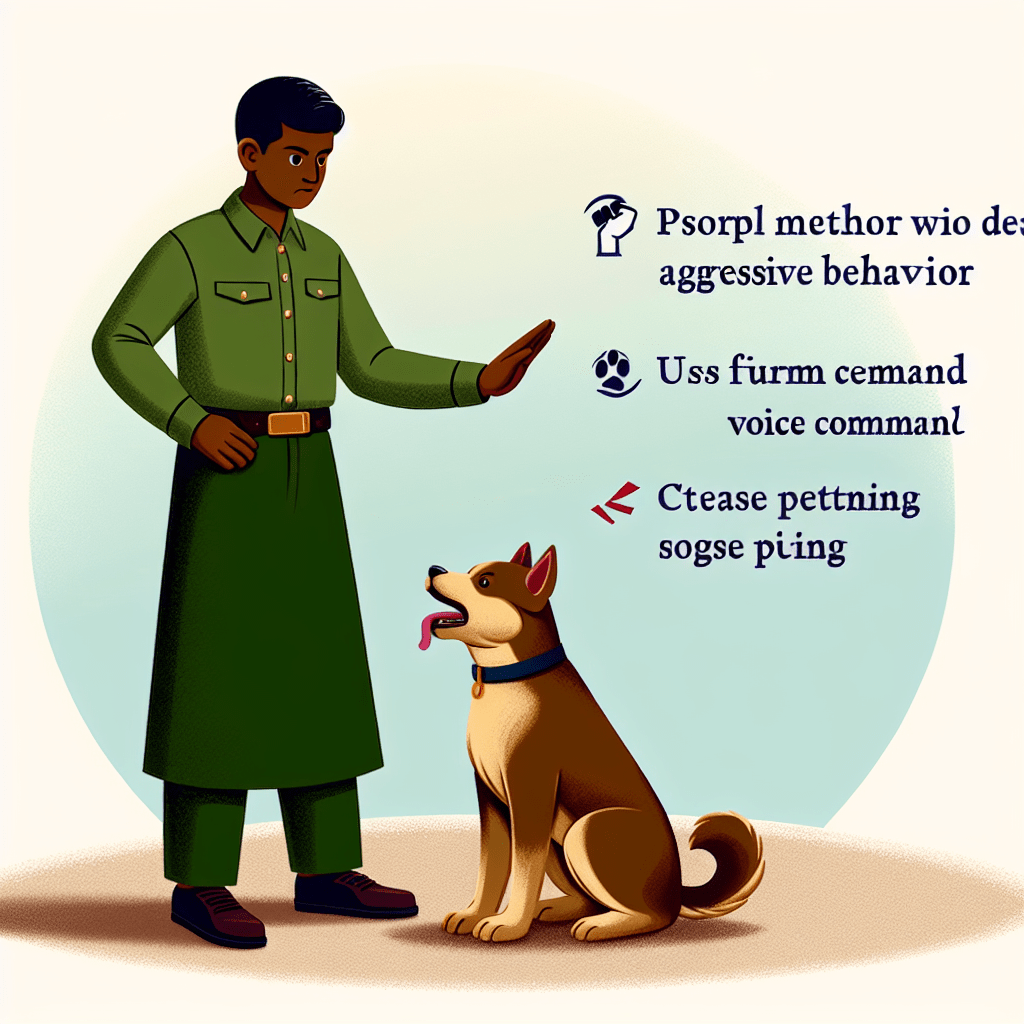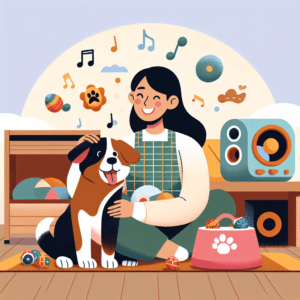Get your free Book Here

Understanding Aggression: Essential Strategies for Managing Aggressive Dog Behavior
As a devoted dog lover, I’ve seen firsthand the extraordinary joy and companionship that our furry friends bring into our lives. However, alongside these tales of joy, I’ve also encountered the often misunderstood and complex behavior of aggressive dogs. Many loving pet owners find themselves at a loss when their beloved pups display aggressive tendencies, whether through barking, growling, or even biting. My aim with this blog post is to delve into the nuances of dog aggression and equip you with essential strategies to effectively manage aggressive behavior so you and your dog can enjoy a happier, healthier relationship.
Chapter 1: Understanding Dog Aggression
First, let’s begin by understanding what aggression is in the context of dog behavior. Aggression is a natural part of any animal’s arsenal for expressing discomfort, fear, or a need to protect. From barking at the mailman to growling at strange dogs, aggression can reveal itself in many forms. It’s important to recognize that aggression is not inherently bad. At its core, it can be a dog’s way of communicating concerns or needs.
Aggression can stem from a multitude of sources, such as fear, territorial instincts, or past trauma. A dog that has had negative experiences with strangers may react aggressively out of fear, while another might display aggression toward other dogs as a way of protecting their human or territory. Begin your journey to understanding aggression by observing your dog’s triggers and reactions carefully. Identify specific situations that prompt aggressive responses, and take note of the patterns. This awareness is the first step in addressing the behavior effectively.
Chapter 2: Types of Aggression
When it comes to dog aggression, there are several different types to be aware of, each requiring a unique approach for management.
-
Fear Aggression: This type occurs when a dog reacts aggressively out of fear, often driven by a lack of confidence. Approaching a fearful dog can lead to aggressive behavior if it feels cornered.
-
Territorial Aggression: Dogs have a strong instinct to protect their territory, which can trigger aggression when strangers or other animals invade their perceived space. This can occur both at home and during walks.
-
Possessive Aggression: Sometimes dogs exhibit aggressive tendencies over toys, food, or even their humans. They may growl or snap to assert dominance over their possessions.
-
Protective Aggression: This behavior is directed toward perceived threats to their family or pack. A protective dog may intervene aggressively when it senses danger to its owner.
-
Redirected Aggression: This can happen when a dog is agitated by something else (e.g., a barking dog or a loud noise) and redirects that frustration toward a nearby person or animal.
By understanding the specific type of aggression your dog is exhibiting, you can tailor your approach to effectively address the behavior and improve your dog’s response.
Chapter 3: Recognizing Signs of Aggression
As loving dog owners, we need to be proactive in recognizing the subtle (and sometimes not-so-subtle) signs of aggression. The following signals often indicate that a dog may be feeling aggressive:
-
Growling: This vocalization is typically an immediate sign that your dog is feeling threatened or uncomfortable.
-
Baring Teeth: A dog that shows its teeth is usually issuing a warning; a bite may follow if the perceived threat doesn’t back off.
-
Raised Hackles: When a dog’s fur along its back stands up, it can indicate heightened emotion, often associated with aggression.
-
Tense Body Posture: Aggressive dogs will often have a stiff stance, with tense muscles and a rigid tail position.
-
Direct Staring: Fixed gaze, accompanied by other aggressive signals, may signify that your dog is prepared to confront the perceived threat.
-
Snapping: A quick nip or snap can express discomfort or a warning, showing that the dog may be reaching its limit.
By recognizing these signs early on, you can intervene or remove your dog from the situation, preventing escalation.
Chapter 4: Setting Boundaries and Creating Structure
Creating a safe and structured environment is paramount in managing an aggressive dog. Establishing boundaries can help your dog understand acceptable behavior and create a foundation of trust over time. Here are some tips to consider:
-
Consistent Training: Employ positive reinforcement training methods to instill commands and expected behaviors. Consistency is key in let your dog understand what is expected of them.
-
Controlled Exposures: Gradually expose your dog to situations that typically trigger aggressive behavior. Start at a distance and reward calm responses. Progressing slowly helps to reduce fear.
-
Safe Spaces: Designate safe areas within your home where your dog can retreat if they feel overwhelmed. This space should include comfortable bedding and toys.
-
Management Tools: Use crates, baby gates, and leashes to control interactions and limit exposure to potential triggers.
By creating boundaries, you’ll help your dog learn organizational structure, which in turn can foster a sense of safety.
Chapter 5: Utilizing Professional Help
If you find yourself overwhelmed or unable to manage your dog’s aggressive behavior, it may be time to seek professional help. Skilled dog trainers and certified behaviorists can provide individualized plans and methods tailored to your dog’s specific needs.
- Group Classes: These can be instrumental for socialization and learning how to interact with other dogs in a controlled setting.
- One-On-One Training: A certified trainer can observe, assess, and create a plan that addresses your dog’s unique challenges.
Don’t hesitate to reach out for help; the safety and happiness of your dog and those around you is what’s most important.
Chapter 6: The Importance of Socialization
Socialization is an essential component in reducing aggressive tendencies in dogs. The earlier a dog can be exposed to various scenarios, people, animals, and environments, the better equipped they will be to handle different situations positively.
-
Early Exposure: Puppies benefit immensely from early and positive exposure to new experiences, people, and other dogs within the first few months of life.
-
Continued Socialization: Socialization doesn’t stop once your dog reaches adulthood—regularly incorporating social activities can prevent fear and aggression.
-
Controlled Meet-and-Greets: When introducing your dog to new dogs or people, do it in a controlled manner, ensuring both parties are calm before allowing interaction.
-
Neighborhood Walks: Take regular walks in diverse areas with various stimuli, teaching your dog to navigate the world with confidence.
Socialization aligns with creating a well-rounded, confident dog, which naturally helps minimize the likelihood of aggression.
Chapter 7: Handling Aggressive Situations
When faced with an aggressive dog, whether your own or someone else’s, it’s vital to know how to handle the situation calmly and safely.
-
Stay Calm: Dogs often sense our emotions. If you remain calm, you can help defuse the tension in the moment.
-
Do Not Engage Physically: If your dog is aggressive, avoid physically intervening as it may provoke a stronger response.
-
Create Distance: Remove yourself or your dog from the triggering situation if possible. Use commands to get your dog to focus on you instead of their target.
-
Use Commands: Teaching and reinforcing commands like "sit," "stay," and "leave it" can redirect your dog’s energy and refocus their mind.
By remaining composed and employing these tactics, you can help manage aggressive situations more effectively.
Chapter 8: Building a Bond Through Positive Interactions
One of the most impactful strategies in decreasing aggressive behavior is to build a solid bond with your dog. A trusting relationship can lead to improved confidence and a reduction in aggressive tendencies.
-
Positive Reinforcement: Use treats and praise to reward good behavior during training or socialized situations.
-
Engage in Play: Regularly engage in fun activities and playtime, fostering a sense of joy and relaxation for both of you.
-
Quality Time: Spend quality moments with your dog through walks, training, and leisurely sitting together without distractions.
-
Mental Stimulation: Keep your dog mentally stimulated with interactive toys and puzzles, which can tire out an active mind and reduce anxiety.
Ultimately, by nurturing a positive bond with your dog, you can create a foundation for better behavior and reduced aggression.
Conclusion
As a dog lover, managing aggression in our furry companions is an important and often daunting task. However, through understanding, consistent training, professional guidance, and fostering a strong bond, we can create environments where our dogs feel safe and secure. Remember, aggression is often a reflection of fear or discomfort, and with patience and love, we can guide our dogs toward a happier existence. When faced with aggression, it’s important to approach the situation with empathy and knowledge, acknowledging that our dogs may not communicate as we do. With time and dedication, we can transform aggression into understanding, leading to a well-behaved, confident dog who brings joy to every moment shared.
FAQs
Q1: Can all aggressive dogs be rehabilitated?
A: While many dogs can learn to manage their aggressive tendencies through proper training and socialization, some may not fully overcome their aggression, especially if it stems from severe trauma or genetic factors. Consulting a professional can help assess your specific situation.
Q2: Is it possible for an aggressive dog to become a good family pet?
A: Yes! Many dogs with aggression issues can become excellent family pets with the right training and support. Consistency, patience, and understanding are key components in helping your dog thrive in a family environment.
Q3: What are some immediate steps I can take if my dog exhibits aggression?
A: Keep your distance from the trigger, redirect your dog’s attention, use calming words, and if necessary, remove them from the situation. Always prioritize safety for both your dog and those around you.
Q4: How do I know if my dog’s aggression is serious?
A: Signs of serious aggression include snapping, biting, excessive growling, or displaying aggression towards people or other animals without provocation. If you notice these signs, it’s crucial to seek professional help.
Q5: Can I still enjoy dog parks with an aggressive dog?
A: Dog parks may not be suitable for aggressive dogs. If your dog exhibits aggression towards others, focusing on one-on-one play and controlled environments with known dogs may be a safer choice until behaviors improve.
Bold-Centered Text:
Unlock the Secrets to a Well-Behaved Dog! 🐾 Tired of your pup’s bad habits? Discover how to transform your unruly dog into a loving companion with our FREE Dog Training Mini Course! Learn essential commands, potty training tips, and effective techniques to eliminate unwanted behaviors in just days. Don’t miss out—sign up now and start your journey to a happier, obedient dog! Join Here! (https://bit.ly/3RJak0a)
Bold-Centered Text:
Instantly Access Your Free Children’s Books Here! (https://payhip.com/BlueCherryStore) – Disclaimer: I may earn a commission from qualifying purchases as an affiliate. Please note that I only recommend products I believe will provide value to my readers. (M)







